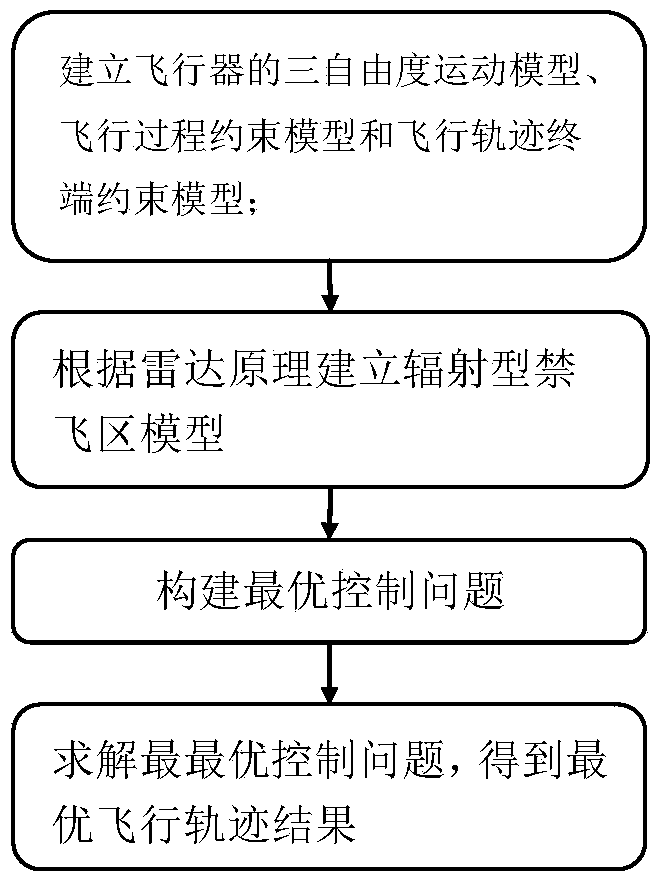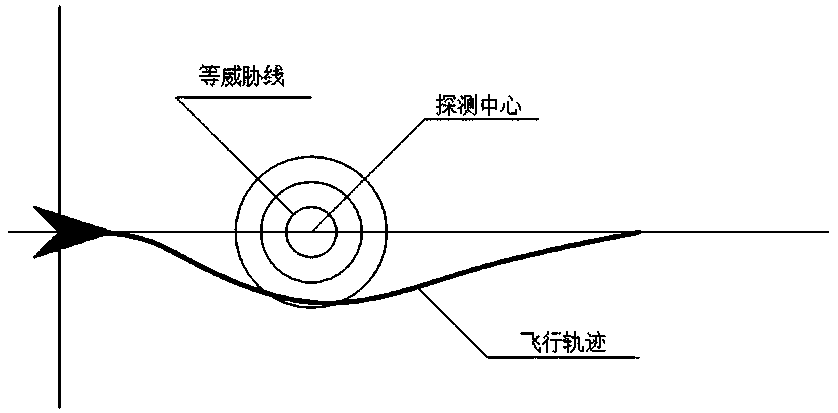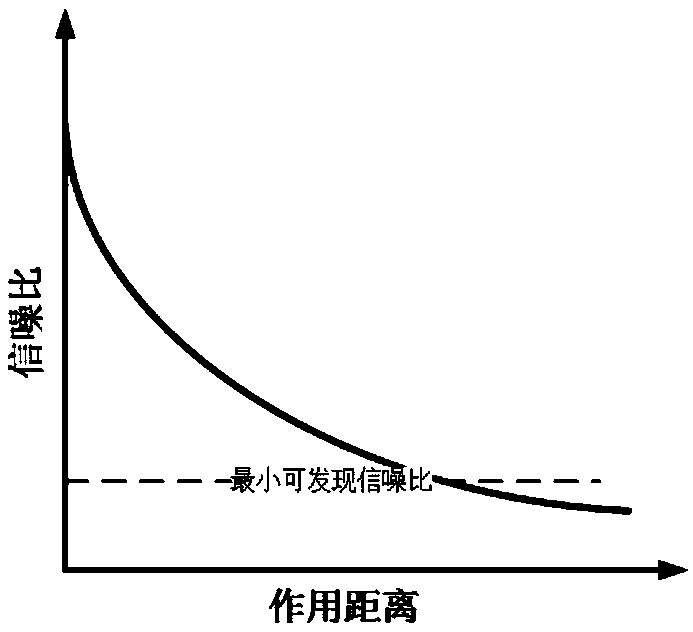A Reentry Trajectory Optimal Design Method for Radial No-Fly Zones
A technology of re-entry trajectory and optimization design, applied in the field of flight, can solve the problem of oversimplification of the model, it is difficult to reflect the radiation pattern close to the exposure danger to a certain extent, etc., to achieve the effect of small threat integration and good detection and tracking.
- Summary
- Abstract
- Description
- Claims
- Application Information
AI Technical Summary
Problems solved by technology
Method used
Image
Examples
Embodiment Construction
[0017] The present invention will be further described below in conjunction with the accompanying drawings and specific embodiments.
[0018] The present invention establishes the threat quantification model per unit time of any point in the radiation-type no-fly zone, describes the threat of the radiation-type no-fly zone, and then transforms the constraint of the no-fly zone into a performance index function related to the threat integral according to the model; finally Use the Gauss pseudospectral method to solve this optimization problem, the specific process is as follows figure 1 shown. figure 2 It is a schematic plan view of the radiation-type no-fly zone in the present invention. The detection center in the figure is the isothreat line expanded by the center of the circle, and the flight path of the aircraft is shown in the figure.
[0019] For ease of understanding the present invention, concrete model and principle are described as follows below:
[0020] 1. Hyper...
PUM
 Login to View More
Login to View More Abstract
Description
Claims
Application Information
 Login to View More
Login to View More - R&D
- Intellectual Property
- Life Sciences
- Materials
- Tech Scout
- Unparalleled Data Quality
- Higher Quality Content
- 60% Fewer Hallucinations
Browse by: Latest US Patents, China's latest patents, Technical Efficacy Thesaurus, Application Domain, Technology Topic, Popular Technical Reports.
© 2025 PatSnap. All rights reserved.Legal|Privacy policy|Modern Slavery Act Transparency Statement|Sitemap|About US| Contact US: help@patsnap.com



